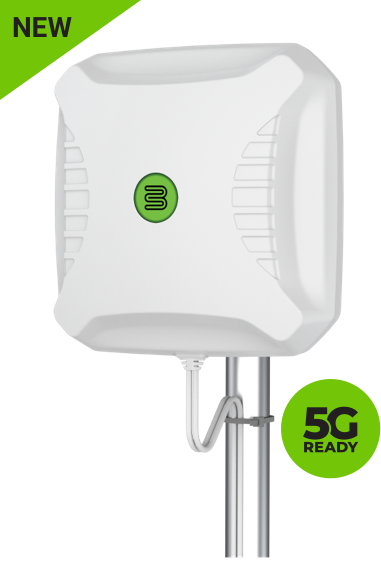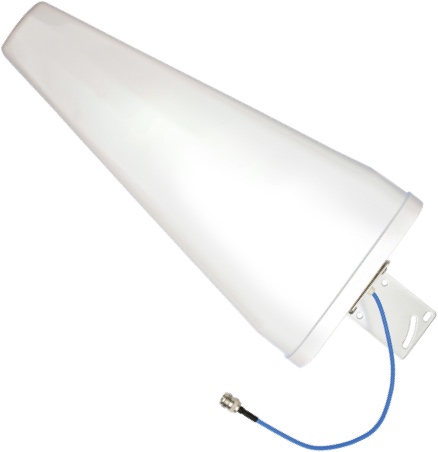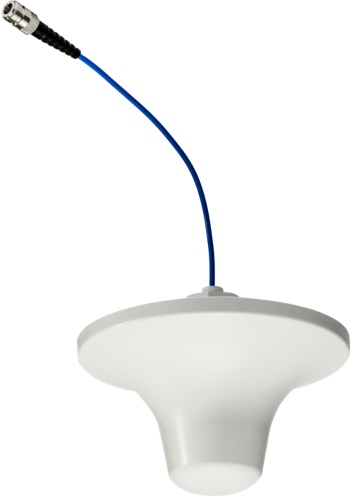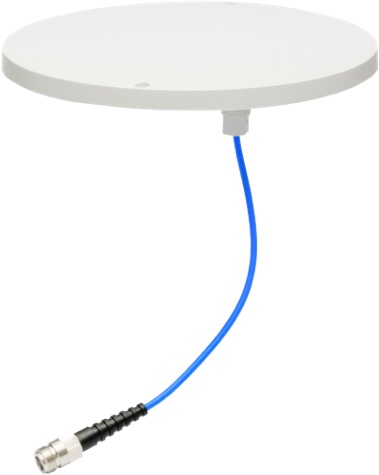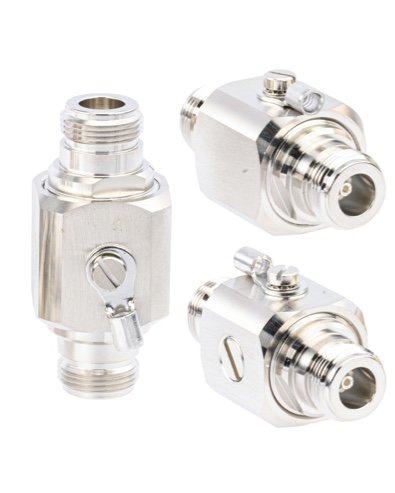
They are one of the leading suppliers of cellular and RF accessories. With a global presence and high quality products all at a great value, we trust Bolton Technical equipment to function at a high level and use them in all our bundles and for all our commercial installations.
The Long Ranger is Bolton’s flagship antenna, the big kahuna, and it’s easy to see why. Larger than any other antenna we sell, The Long Ranger is a log-periodic grid antenna with a range of over 10 miles. This, coupled with its absurd maximum gain of +28 dBi, makes it our top antenna recommendation for extremely weak signal areas. If you can’t hunt down usable signal with The Long Ranger, then it doesn’t exist. It works for any celllular carrier you might throw at it. All that, and it’s 5G capable, too.
The Crossbow is a cross-polarized MIMO antenna designed for cellular hotspots. It increases hotspot upload and download speeds via direct connection. With up to 5 miles of range and +11 dBi of gain, it’ll turn sputtering hotspots into speed demons all on its own. It’s directly compatible with any SMA-Female hotspot, but with a simple adapter can be used on TS-9 hotspots as well. We also have a variant allowing for long cable runs, but you’ll need to buy the proper adapter for your hotspot if you decide to go that route. Works for all carriers, and is 5G capable, too.
The Arrow, while a bit smaller than The Long Ranger, is no slouch itself. This high-gain log-periodic antenna is easily installed on any rooftop and features significantly more gain than a typical Yagi antenna at a maximum of +12 dBi. Simple to point and very powerful, the Arrow LPDA antenna strikes the perfect balance between ease of use and power. Like most TV antennas, it can withstand nearly any weather conditions, including snow, sleet, and rain.
The Quicksilver is a standard Yagi directional cellular antenna with a twist: it provides higher performance than its brethren. With up to +11 dBi of gain and over 3 miles of range, The Quicksilver is a solid performer on the roof of any building. It captures signal in a 45-degree, “flashlight” radius allowing for higher gain at a point of entry than their omni-cousin, The All ‘Rounder, but less than its more directional cousins, The Long Ranger and The Arrow. It works across all cellular bandwidths, and if you buy the 5G version, it even covers that.
The All ‘Rounder is Bolton’s multi-purpose omni-directional cellular donor antenna. That may be a mouthful, but in short: it captures all signal in an area. This means you’ll want to use it in areas with semi-decent outside signal, but in those areas, it is versatile and easily installed. It is best used in multi-carrier systems where outside signal isn’t a problem, but building materials are killing your signal indoors. The All ‘Rounder provides up to +4 dBi of gain across all cellular bandwidths, and if you buy the 5G version, it even covers that.
 Have a 1-year Warranty
Have a 1-year Warranty
 Have a 30-Day Money
Have a 30-Day Money  Will outperform other
Will outperform other It’s a simple mount you can place on your roof and mount an antenna to. A sleek, yet elegant option, at Bolton they don’t believe it should cost an arm and a leg to get your antenna where it needs to be. Will work for any Bolton antenna save The Long Ranger.
The Cowboy is an omnidirectional inside antenna for cellular signal boosters. It’s designed to be hung from low-lying ceilings, such as office drop tile, and propagate amplified cellular signal in a 360-degree radius. Best used in wide open spaces, it’s got up to +5.1 dBi of gain, and if you’ve got a 5G capable donor antenna and signal booster, the 5G version of The Cowboy can handle that, too.
The Rondo is a higher-powered, lower-profile version of The Cowboy. It’s shaped like a disc, so it won’t stand out on your ceiling, and it has higher gain than The Cowboy too, at up to +6 dB. It propagates cellular signal in a 360-degree radius and can handle any carrier bandwidths – including 5G, should you buy the proper version and have a donor and booster system that can handle it.
The Indoor Board is what it says: an indoor version of The Outdoor Board – that is, a panel directional cellular antenna. This propagates signal indoors directionally, meaning it is ideally placed on a wall. It is best used in rooms with high ceilings, corridors, or smaller spaces. It provides the highest gain at endpoint of any indoor antenna at up to +8 dBi, and can handle all cellular carriers. If you’ve got a system that can handle 5G (meaning outdoor antenna and signal booster), the 5G version can propagate it, too.
I live out in the country in a 100% steel framed house with metal roof. Usually only got 1 maybe 2 bars in house, not even 4G. Outside I may get 2 bars 4G. Installed system which was very simple, switched it on and instantly had 3 to 4 bars of LTE in the house. System works fantastic, recommend strongly.
– Jordan Foutz
Bolton’s 400-spec ultra-low loss coaxial cable can transmit any kind of RF signal reliably and across great distances, with a loss per 100 feet rating of only 6 dB. Designed for indoor and outdoor use, Bolton400 is CL3 rated and carries up to 300 volts. In other words, this is one tough, reliable 50 ohm cable, hitting the sweet spot between flexibility and run length.
Bolton’s 600-spec ultra-low loss coaxial cable can transmit any kind of RF signal reliably and across even greater distances than the Bolton400, with a loss per 100 feet rating of only 3 dB – roughly half the Bolton400. This is made possible by being rather rigid, so this cable is best used for long, straight runs. It is CL3 rated, carries up to 300 volts, and is designed for indoor and outdoor use.
Bolton Technical’s line of Lightning Surge Protectors can be placed in-line on any RF system to protect them from lightning surges. These devices come in 50- and 75-ohm varieties and are sold at lower prices than their competition, making them the no-brainer option when buying an LSP.


